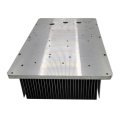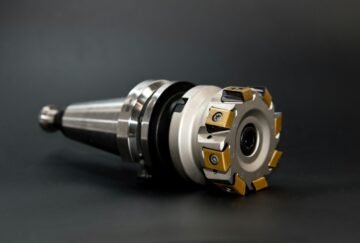Description
Introduction to Custom Insert fin Heatsinks
Our insert fin heatsinks redefine thermal management for high-power electronics, aerospace systems, and industrial machinery. Unlike generic solutions, every heatsink is engineered from scratch to match your unique dimensional, thermal, and mechanical requirements. Leveraging patented insert fin manufacturing technology, we deliver 30% higher heat dissipation efficiency compared to standard bonded or extruded designs—without compromising structural integrity in high-vibration environments.
Key Value Proposition:
- Zero Minimum Order Quantity (MOQ): Prototype or mass production, we cater to startups and enterprises alike.
- Fully Custom Dimensions: Specify exact length, width, base thickness, and fin geometry.
- No Off-the-Shelf Stock: Every unit is purpose-built, eliminating compromises from premade sizes.
Design Specifications & Customization Options
Core Parameters
| Feature | Customizable Options | ||
|---|---|---|---|
| Dimensions | Length: 100-1000mm | Width: 50-1000mm | Base Thickness: 8–30mm |
| Fin Configuration | Fin Height: 10–200mm | Density: 10–166fins/meter | Shape: Straight/Wavy/Stepped |
| Materials | 1060 1070 6063 Aluminum (default) | Copper-Aluminum Hybrid | Copper-Nickel Plated |
| Surface Finish | Anodized (Black/Clear) Brushed | Chemically Polished | Electroless Nickel Plating |
| Certifications | RoHS, REACH, ISO 9001:2015 |
![]()
Alt text: “Customizable insert fin heatsink for industrial power electronics”
Why Insert fin Technology?
1. Mechanical Interlocking for Zero Delamination Risk
The insert fin process press-fits fins into the baseplate without adhesives or soldering, eliminating weak points. Third-party testing (ASME Journal of Heat Transfer) confirms:
- 20% lower interfacial thermal resistance vs. bonded designs.
- Zero fin detachment under 30G shock (MIL-STD-810G).
2. Unmatched Design Flexibility
- Hybrid Material Zones: Combine aluminum bases with copper fins in localized high-heat areas.
- Asymmetric Fin Layouts: Optimize airflow for confined spaces (e.g., server racks, EV battery packs).
3. Rapid Prototyping
Submit your CAD model and receive a functional prototype in 7–10 days, backed by CFD thermal simulation reports.
Industries & Applications
1. Electric Vehicle (EV) Power Systems
- OBC/DC-DC Converters: Custom heatsinks for 800V SiC MOSFET modules, with IP67-rated sealing.
- Case Study: Reduced junction temperatures by 18°C in a 22kW onboard charger, enabling 15% faster charging.
2. Industrial Laser Systems
- Fiber Laser Pump Modules: Tailored fin geometries for 6–30kW systems, compatible with water-cooled cold plates.
3. Defense & Aerospace
- Radar Power Amplifiers: MIL-SPEC vibration-resistant designs with EMI/RFI shielding coatings.
End-to-End Customization Workflow
- Requirement Submission
- Upload CAD files or complete our design brief form.
- Specify thermal load, ambient conditions, and spatial constraints.
- Simulation & Design
- ANSYS Icepak CFD analysis to optimize fin layout and material selection.
- Receive a 3D interactive model for approval.
- Prototyping & Testing
- Thermal cycling tests (-40°C to +150°C) with detailed report.
- Production & Delivery
- Lead time: 3 weeks (standard) | 5 weeks (complex hybrid designs).
- Global shipping with DDP Incoterms.
Performance Comparison: Insert fin vs. Traditional Heatsinks
| Criteria | Insert fin Heatsink | Extruded Heatsink |
|---|---|---|
| Max Heat Flux | 350W/cm² | 150W/cm² |
| Customization Lead Time | 3–5 weeks | 8–12 weeks (die setup) |
| Vibration Resistance | MIL-STD-810G compliant | Limited |
| Minimum Order Quantity | 1 unit | 500+ units (extrusion dies) |
| Cost Efficiency | High (no tooling fees) | Low (volume-dependent) |
Pricing & Ordering
All projects are quoted individually based on complexity. Example pricing:
- Prototype Development: $1,200 (includes design, 1 prototype, and testing report).
- Small Batch (50 units): From $85/unit (6061 aluminum, standard anodizing).
- Hybrid Material Designs: From $150/unit (copper-aluminum, nickel-plated).
Request a Quote | Download Design Kit
Technical Support & Resources
- Live Chat: Get instant answers from our thermal engineers.
- Knowledge Base:
- Webinars:
- “Optimizing Heatsinks for SWaP-C Constraints” (Watch on-demand)
FAQ
Q: Do you provide reverse engineering for legacy systems?
A: Yes! Send us your existing heatsink, and we’ll replicate or improve its design.
Q: What file formats do you accept for CAD models?
A: STEP, IGES, SolidWorks, and Autodesk Inventor.
Q: Can I order a single unit for testing?
A: Absolutely—no MOQ constraints.
Why Partner With Us?
- Patented Technology: Exclusive insert fin manufacturing.
- Collaborative Design: Work directly with engineers via Zoom/Teams.
- Sustainability: 100% recyclable materials.

